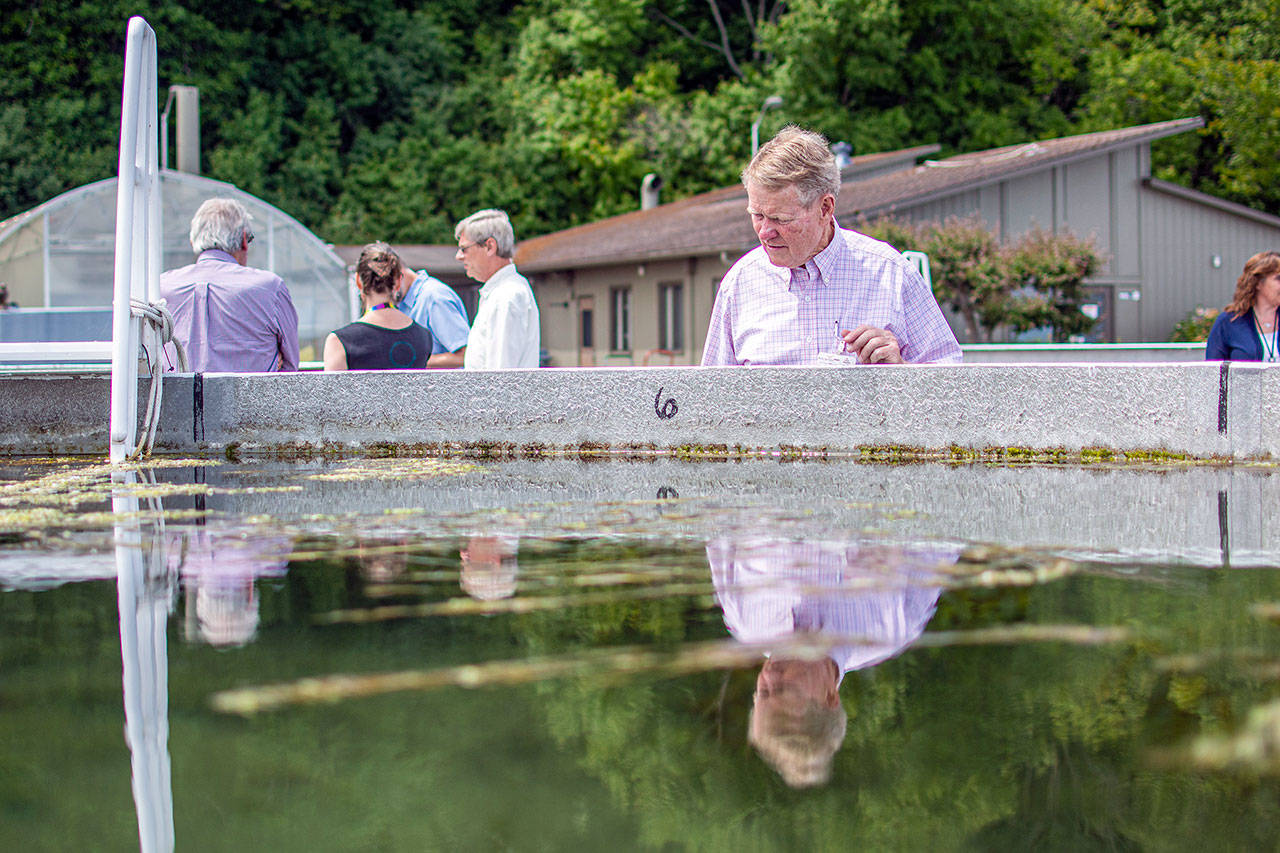SEQUIM — The Pacific Northwest National Laboratory’s Marine Sciences Laboratory in Sequim is studying climate change’s effects on trees in Grays Harbor County.
A study of Beaver Creek is examining how forests respond to increasing amounts of salt water.
Earth scientist Nick Ward called Beaver Creek, which is between Westport and Aberdeen, an “extreme” example of what happens as sea levels rise. In 2014, a culvert was knocked out to improve access for spawning salmon, but that also reintroduced tidal flow into the floodplain.
“We now get every month or so these floods of seawater where there are 80-year-old trees growing,” he said. “We are seeing these guys dying quick.”
Ward, who studies greenhouse gasses, said the death of the trees puts the carbon emissions and carbon sequestration in that watershed out of balance.
“This freshwater wetland, the upland forest and the river are in balance,” he said. “The forest takes up a bunch of methane, the river and the wetland put out a bunch, and it equals out. These floods tip it over the scale.”
He said a model shows that system will not reach equilibrium for about 15 years.
Ward said he and other scientists are trying to better understand why this equilibrium seems to exist around the world and how it relates to climate change.
“We’re now getting to the point where our quantification of CO2 emissions from aquatic systems is almost balancing the terrestrial landscape,” he said. “Really, we’re trying to understand why that is and how that will change with a change of climate.”
Reporter Jesse Major can be reached at 360-452-2345, ext. 56250.



